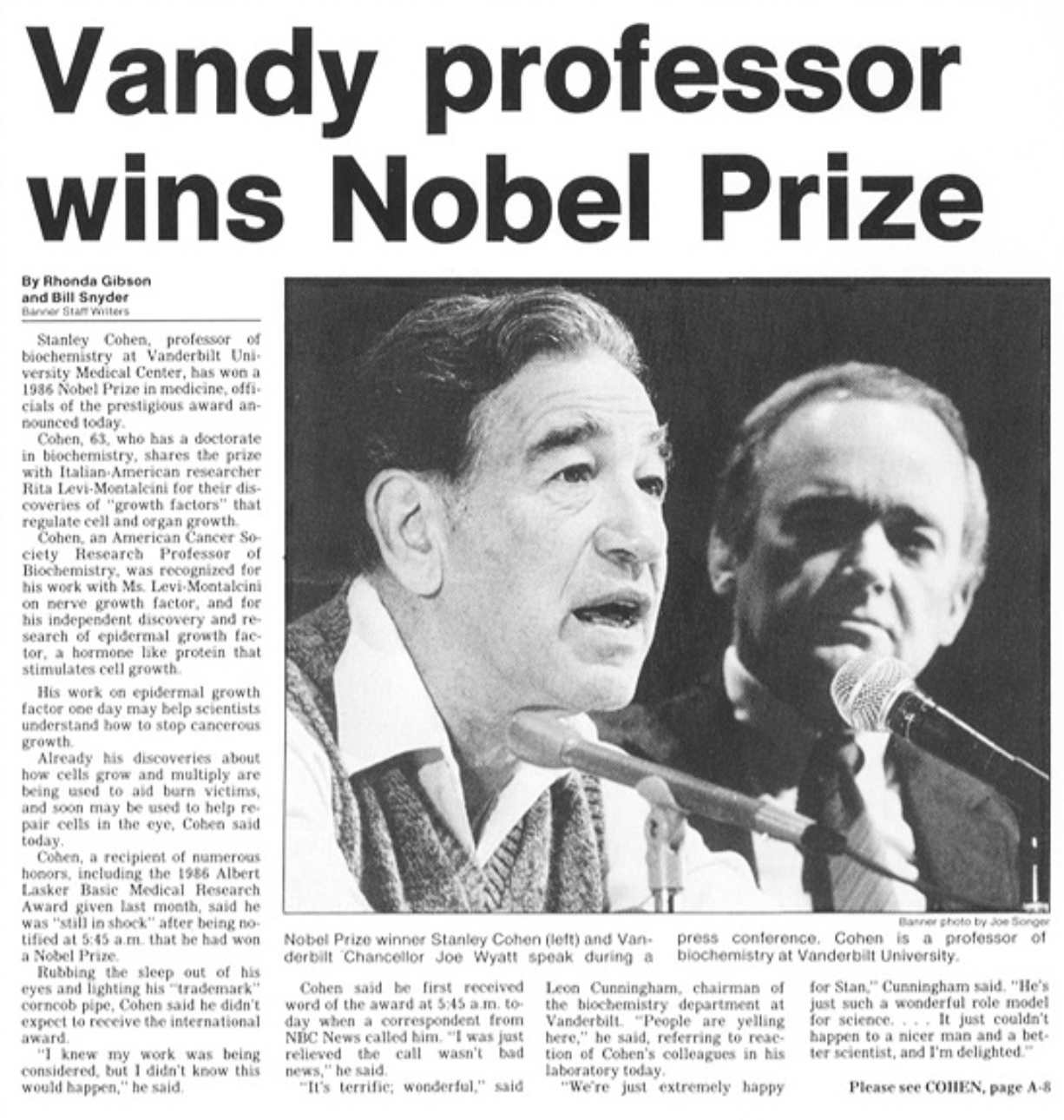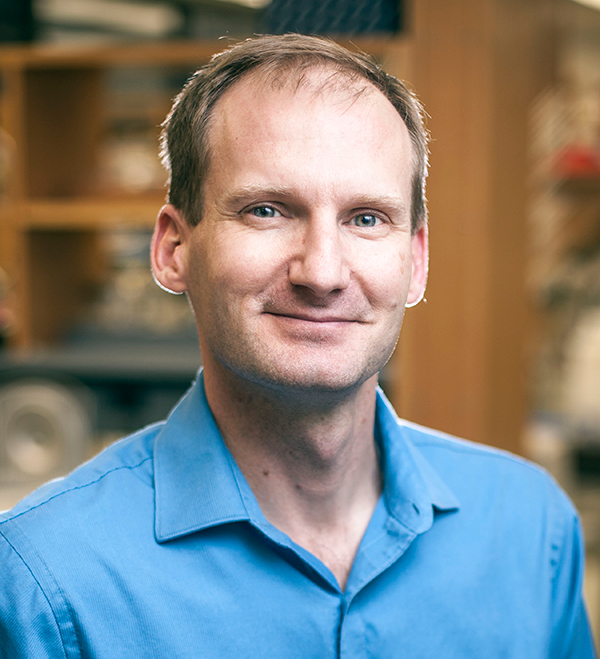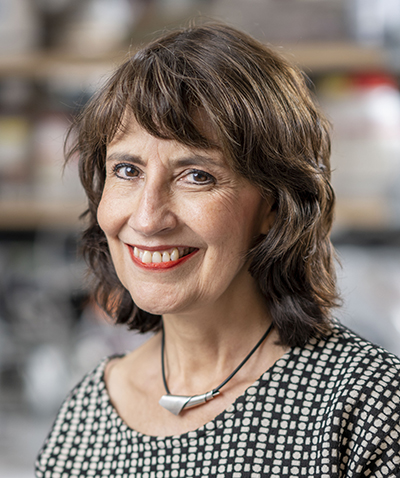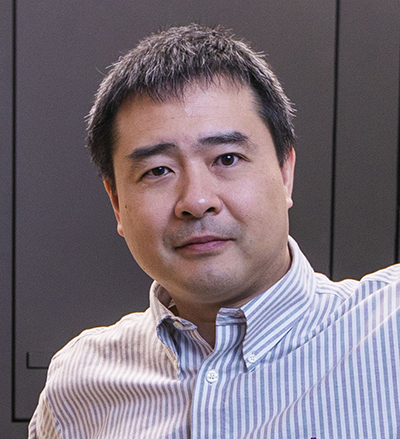By Aaron Conley

Houra Merrikh, professor of biochemistry, and Teru Nakagawa, associate professor of molecular physiology and biophysics, have both been selected to receive one-year research awards from the Stanley Cohen Innovation Fund. The awards will support groundbreaking and paradigm-shifting research, including Merrikh’s study of the molecular drivers of evolution that enables cancer to develop resistance to drugs and Nakagawa’s study of the biological significance of lipids associated with membrane proteins.

Established through philanthropy in 2019 and named after the late Nobel laureate Stanley Cohen, emeritus professor of biochemistry, the Cohen fund annually supports innovative early-phase research projects that are high risk yet potentially high reward. These awards honor Cohen’s curiosity-driven seminal discoveries in growth factor signaling, which laid the groundwork for our understanding of embryonic and cancer development and led to the invention of numerous anticancer drugs that are still used today. “We’ve arrived at a moment of celebration,” said Larry Marnett, dean of the School of Medicine Basic Sciences. “The Cohen fund has reached our initial goal thanks to contributions from donors and matching institutional investment. This model of co-investment—where donors and departments come together—is propelling some very exciting work here.”
Houra Merrikh – Molecular Drivers of Evolution in Cancer

“Drug resistance is among the greatest challenges facing modern medicine,” said Merrikh. “To date, scientific innovation has not succeeded in outpacing evolution. Even with the advent of novel targeted therapeutics and chemotherapies, multidrug resistant cancers are still responsible for over 90% of cancer-related deaths worldwide.” For her project, Merrikh proposes “a fundamental shift in the scientific community’s approach to drug resistance in cancer targeting the molecular mechanisms that promote tumor evolution.”

Merrikh, a Blavatnik Award finalist in 2020 and 2021 and recipient of the Vilcek Prize for Creative Promise in Biomedical Sciences, is “a world-leader in the analysis of mechanisms that contribute to antimicrobial drug resistance and has made critically important contributions to the study of conflicts between DNA replication and transcription” according to David Cortez, chair of the Department of Biochemistry and holder of the Richard N. Armstrong Chair for Innovation in Biochemistry.
This project builds on that research expertise, Cortez said, as many cancer therapies induce DNA damage, which can lead to mutations that generate resistance. “Merrikh’s idea is that interfering with this process could reduce the capacity of cancer cells to evolve drug resistance. She has found a specific target that is a determinant of whether the repair is mutagenic.” More specifically, Merrikh’s hypothesis is that the action of this target “contributes to the generation of mutations in cancer cells that provide selective advantages to the tumor for growth, metastasis, or cancer therapy resistance.”
Merrikh’s findings, as supported by the Cohen fund, could lead to a new field that may ultimately resolve a critical problem in the clinic.
Teru Nakagawa – Biological Significance of Lipids Associated with Membrane Proteins

“Membrane-embedded proteins play numerous critical roles in cell physiology,” said Dr. Nancy Carrasco, chair of the Department of Molecular Physiology and Biophysics and holder of the Joe C. Davis Chair in Biomedical Science. “Moreover, mutations in and other dysfunctions of membrane proteins are often associated with human disease.” Nakagawa seeks to determine the biological significance of lipids surrounding membrane proteins, as this “could create a paradigm-shifting leap beyond conventional structural biology of membrane proteins.” His work may fill an elusive gap in scientific knowledge, which is highly relevant to health as a foundational aspect of how the body functions.
Nakagawa, a recipient of NARSAD’s Young and Independent Investigator Awards and the Kazato Prize in Electron Microscopy, has been at the forefront of structural biology, specifically through the use of cryo-electron microscopy, throughout his career. Cyro-EM is a technique that uses electrons to obtain images of a given sample; because of the physical properties of electrons, electron microscopes yield images with a higher resolution than conventional light microscopes. The downside of using electrons, however, is that the high-energy beam can damage samples. This is where the “cryo” part comes in: to protect them, researchers must freeze the samples on scaffolds called grids. Nakagawa has been making discoveries using cryo-EM since 2005, including work leading to a solo-authored paper in Science, a rarity in any field of science, in 2019 on a very high-resolution structure of a recombinant glutamate receptor complex.

“Nakagawa’s project was born of his recognition of a fundamental problem: that membrane proteins reside in a lipid bilayer, and that the potential structural and functional influences of protein-lipid interactions within the bilayer have largely been ignored,” said Carrasco. “This high-impact project will open a new frontier, with the potential to bring about a paradigm shift in our understanding of all membrane proteins, which will affect future discoveries all along the spectrum of biomedical research.” Carrasco believes that the project echoes the revolutionary impact of Stanley Cohen’s career.
Supporting the Cohen Innovation Fund
With the rapid advancement of research and computational technologies, we are at an exciting time in science, ready to make leaps toward managing or curing many diseases. The faculty and research labs in the School of Medicine Basic Sciences are at the vanguard of these advances while simultaneously training the next generation of discovery scientists. The Cohen fund plays a key role in enabling our faculty to pursue curiosity-driven questions at the forefront of science to impact human health.
To support the Cohen Innovation Fund, online gifts can be submitted here.